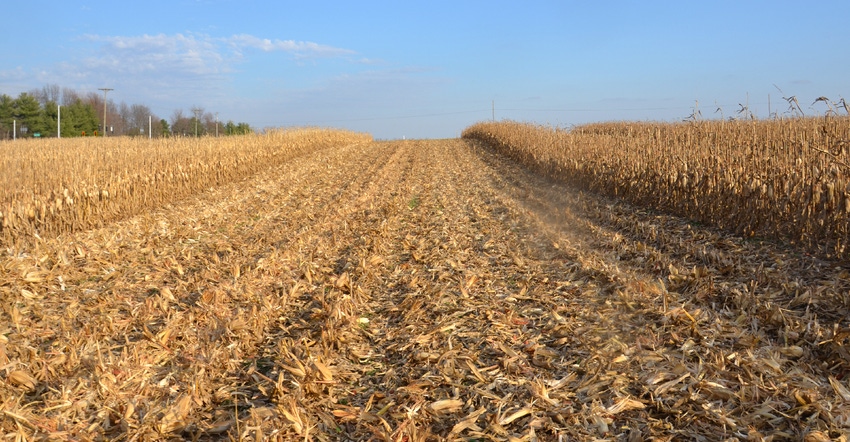February 4, 2021

Do your fields still have residue from several years ago? Or instead, do you have trouble keeping enough residue on the surface? Residue decomposition is mainly governed by soil biology and carbon-to-nitrogen ratios. If your biology isn’t active or your carbon-to-nitrogen ratio is sky-high, residue won’t decompose. If your biology is very active or your carbon-to-nitrogen ratio is very low, residue will disappear too quickly.
How can you manage the carbon-to-nitrogen ratio to have just the right amount of residue left on the surface?
Understand terms
You often see carbon-to-nitrogen ratio written as C:N, which shows mass of carbon to mass of nitrogen. For example, a ratio of 10:1 means there are 10 units of carbon for every 1 unit of nitrogen. Soil microorganisms have a C:N ratio of 8:1. To survive and stay active, they need a diet with a C:N ratio of 24:1. Sixteen units of carbon will be used for energy and eight units for maintenance.
This 24:1 ratio relates directly to residue decomposition and nutrient cycling. If you add residue, such as a mature cereal rye cover crop that has a C:N ratio higher than 24:1, microbes will seek out additional nitrogen to consume the extra carbon. The nitrogen consumed by organisms becomes immobilized and cannot be recovered until they die and decompose.
If they run out of nitrogen before carbon is decomposed, they will slow or stop decomposition until another source of N arrives. This could tie up nitrogen needed for the crop, as well as leave extra residue on the surface.
If you add residue with a C:N ratio lower than 24:1, such as radishes or clover, microbes consume residue quickly and some nitrogen will be left over. This nitrogen will be available for the next crop, but there will be little to no residue protecting the soil surface.
Corn residue with a ratio of 57:1 breaks down more slowly than soybean residue with a ratio of 3:1. However, just because a certain cover crop or cash crop has a high or low C:N ratio doesn’t mean it’s a bad choice. It just means you must prepare for those effects.
Management steps
After corn, for example, consider planting a lower C:N ratio cover crop to help with residue decomposition. In turn, a high C:N ratio cover crop after a low-residue crop, such as soybeans, will help provide soil cover and decompose during the following season to provide nutrients. While these examples explain the decomposition process, they aren’t as applicable for someone just starting with cover crops.
With cover crop mixes, the C:N ratio can be customized more than with a single species. By adding a low C:N species to a high C:N species, the ratio can be adjusted. A ratio of 30:1 is considered ideal in many situations. It provides material that is readily decomposed but leaves some residue to provide cover. Keep in mind that a young plant has a much lower C:N ratio than a mature plant.
As you transition to healthier soils, microbial activity will increase, meaning even higher C:N ratio plants break down more quickly. Think about readjusting your C:N ratio or letting covers grow longer. It’s a good problem. Healthy soil biology is providing residue decomposition, cycling nutrients and building soil organic matter!
Kautz is a district conservationist with the Natural Resources Conservation Service. She writes on behalf of the Indiana Conservation Partnership.
You May Also Like




